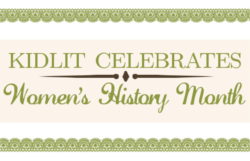March 12 - Today's post provided by Heidi Hemming
Author Pearl S. Buck once said that writing her books was like being “ a juggler trying to keep a handful of balls aloft at once. . . . Were I a man, my books would have been written in leisure, protected by a wife and a secretary and various household officials. As it is, being a woman, my work has had to be done between bouts of homemaking.” All I can say to that is “amen sister.” When my sister and I started writing Women Making America in 2003, we had busy lives and five children, ages two to ten, between us. Our project was carried out in the midst of homework assignments, hastily prepared meals, and Girl Scout cookie sales. But our commitment arose from a passionate love of women’s history and our realization that as educators we could not find one chronological history of American women written at a level accessible to readers of all ages. How would students discover that women have been full participants in the American story if there weren’t the resources to teach?
Our efforts resulted in a book entitled, Women Making America: a colorful whirlwind tour of what it would have been like to be a woman living in any given era of American history. How would it have felt to get up every day and put on a corset, layers and layers of clothes, and top it off with a huge hat? What could have motivated a group of young crew team members to march into the Yale athletic director’s office, take off their shirts to reveal “TITLE IX” scrawled across their chests? And what was Ellen Church doing wearing that silly cape and little cap, pushing a plane into its hanger? Throughout the book we included reoccurring themes such as health, home, amusements, paid work, and beauty to provide a lens for both change and continuity over time.
Race, geography, culture and class have all shaped the experience of womanhood in significant ways. In this version of history, slaves, Japanese picture brides, and poor seamstresses appear side by side with more well-known icons of women’s history. Central to the story is the idea that we are all history-makers, and that the choices we make matter. To parenthesize this, each chapter begins with a choice, from slave Satira Turner walking away from her master with Christmas dinner still on the stove, to Louise Rosine refusing to roll up her stockings on a hot 1920s Chicago beach. As much as possible, we used anecdotes and women’s own voices to describe what they did and how they felt about it. The result is a narrative in which we see ourselves, our mothers, and our grandmothers.
Not long after Women Making America was published, our editor’s eight-year-old daughter had a friend over to play. In the course of the game, he insisted that girls were not as capable as boys. “Wanna make a bet?” she responded, and ran to show him the book.
We know women’s history matters, but so should everyone else.
Editor's Note:
Visit Heidi Hemming and sister Julie Hemming Savage's website at Women Making America. There you may download Chapter 2 and Chapter 7.














"Central to the story is the idea that we are all history-makers, and that the choices we make matter." Wow! Powerful stuff!
ReplyDeleteI like that the book itself is structured chronologically, but that central to its message is the fact that all great acts (and progress itself) have been the result of courageous choices. Looks like a book I'd want my own children to read!